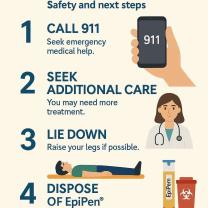What you should know about bladder cancer?
Bladder cancer is a type of cancer that begins in the cells of the bladder, which is a hollow organ in the lower abdomen responsible for storing urine. Here are key facts and insights about bladder cancer:
1. Types of Bladder Cancer:
- The most common type of bladder cancer is transitional cell carcinoma, which originates in the cells that line the inside of the bladder. Squamous cell carcinoma and adenocarcinoma are less common types.
2. Risk Factors:
- Several factors increase the risk of developing bladder cancer, including smoking, exposure to certain chemicals (e.g., in the workplace), a family history of the disease, and chronic bladder inflammation.
3. Symptoms:
- The most common symptom of bladder cancer is blood in the urine (hematuria), which may be visible or microscopic. Other symptoms may include frequent urination, pain during urination, and lower back pain.
4. Diagnosis:
- Diagnosis typically involves a combination of tests, including urinalysis, imaging studies (such as a CT scan or ultrasound), and cystoscopy, which involves using a thin tube with a camera to examine the bladder's interior. A biopsy may be performed to confirm the diagnosis.
5. Staging:
- Bladder cancer is often staged based on the extent of its spread. The stages range from 0 (confined to the innermost layer of the bladder) to IV (cancer has spread to other parts of the body). Staging helps determine the appropriate treatment.
6. Treatment Options:
- Treatment options for bladder cancer may include surgery (removing the tumor or the entire bladder), chemotherapy, radiation therapy, immunotherapy, and targeted therapy. The choice of treatment depends on the stage and type of cancer, as well as the patient's overall health.
7. Prognosis:
- The outlook for individuals with bladder cancer varies depending on the stage at diagnosis. Early-stage bladder cancer often has a favorable prognosis, while more advanced stages may be associated with a lower survival rate. Regular follow-up and adherence to the treatment plan are essential.
8. Recurrence:
- Bladder cancer can recur even after successful treatment. Regular check-ups are crucial to monitor for recurrence. Some individuals may receive maintenance treatments to reduce the risk of recurrence.
9. Prevention:
- Reducing the risk of bladder cancer can involve quitting smoking, avoiding exposure to harmful chemicals, drinking plenty of fluids, and eating a healthy diet. Early detection through regular medical check-ups and screening is also important.
10. Support and Resources:- Receiving a cancer diagnosis can be overwhelming, and it's essential to seek support from healthcare professionals, support groups, and organizations dedicated to helping cancer patients and their families.
Remember that bladder cancer is a complex disease, and treatment plans are tailored to each patient's specific circumstances. If you or someone you know is facing bladder cancer, consult with a healthcare provider to discuss the most appropriate treatment options and to address any questions or concerns. Early detection and timely treatment can significantly impact the outcome of bladder cancer.
What You Should Know About Bladder Cancer: A Comprehensive Overview
Bladder cancer is a type of cancer that begins in the cells that line the bladder. The bladder is a hollow organ located in the lower abdomen that stores urine. Bladder cancer is the sixth most common cancer in the United States, and it is more common in men than in women.
There are two main types of bladder cancer: urothelial carcinoma and squamous cell carcinoma. Urothelial carcinoma is the most common type of bladder cancer, and it accounts for about 90% of all cases. Squamous cell carcinoma is a rarer type of bladder cancer that develops from flat cells that line the bladder.
Bladder cancer can also be classified by stage. The stage of the cancer describes how far the cancer has spread and how aggressive it is. Bladder cancer is typically staged using the TNM system:
- T stage: The T stage describes the size and depth of the tumor.
- N stage: The N stage describes whether or not the cancer has spread to the lymph nodes.
- M stage: The M stage describes whether or not the cancer has spread to distant parts of the body.
Understanding the Types and Stages of Bladder Cancer
Types of bladder cancer:
- Urothelial carcinoma: This is the most common type of bladder cancer, and it accounts for about 90% of all cases.
- Squamous cell carcinoma: This is a rarer type of bladder cancer that develops from flat cells that line the bladder.
- Adenocarcinoma: This is a rare type of bladder cancer that develops from glandular cells.
- Small cell carcinoma: This is a rare type of bladder cancer that develops from neuroendocrine cells.
Stages of bladder cancer:
- Stage I: The cancer is confined to the inner lining of the bladder.
- Stage II: The cancer has spread to the muscle layer of the bladder.
- Stage III: The cancer has spread to the fatty tissue around the bladder or to the nearby lymph nodes.
- Stage IV: The cancer has spread to distant parts of the body, such as the lungs, bones, or liver.
Prevention and Risk Reduction Strategies for Bladder Cancer
There are a number of things that you can do to reduce your risk of bladder cancer, including:
- Quitting smoking: Smoking is the leading risk factor for bladder cancer. Quitting smoking can significantly reduce your risk of developing bladder cancer.
- Drinking plenty of fluids: Drinking plenty of fluids helps to flush toxins out of the bladder. Aim to drink at least eight glasses of water per day.
- Avoiding exposure to certain chemicals: Certain chemicals, such as arsenic and benzidine, can increase your risk of bladder cancer. Avoid exposure to these chemicals if possible.
- Eating a healthy diet: Eating a healthy diet can help to reduce your risk of developing many types of cancer, including bladder cancer. Aim to eat a diet that is rich in fruits, vegetables, and whole grains.
Advocacy, Research, and Support for Bladder Cancer Awareness
There are a number of organizations that are dedicated to bladder cancer advocacy, research, and support. Some of these organizations include:
- Bladder Cancer Advocacy Network (BCAN): BCAN is a leading non-profit organization dedicated to advancing research and providing education and support to patients with bladder cancer and their families.
- Bladder Cancer Research Foundation (BCRF): BCRF is a leading non-profit organization dedicated to funding innovative bladder cancer research.
- American Cancer Society (ACS): The ACS is a leading non-profit organization that provides information and support to people with cancer and their families.
Empowering Individuals and Communities to Fight Bladder Cancer
There are a number of ways to empower individuals and communities to fight bladder cancer. Here are a few ideas:
- Educate yourself and others about bladder cancer: The more people know about bladder cancer, the earlier it can be detected and treated.
- Support bladder cancer research and advocacy organizations: These organizations are working to make a difference in the fight against bladder cancer.
- Participate in bladder cancer awareness events: These events can help to raise awareness of bladder cancer and raise money for research and support.
- Reach out to others affected by bladder cancer: There are many support groups and online communities available for people affected by bladder cancer.
By taking these steps, you can help to empower individuals and communities to fight bladder cancer.










